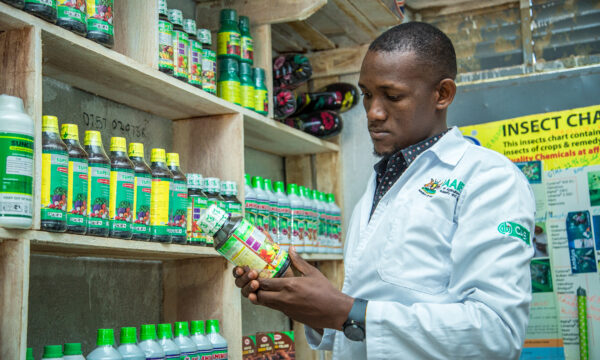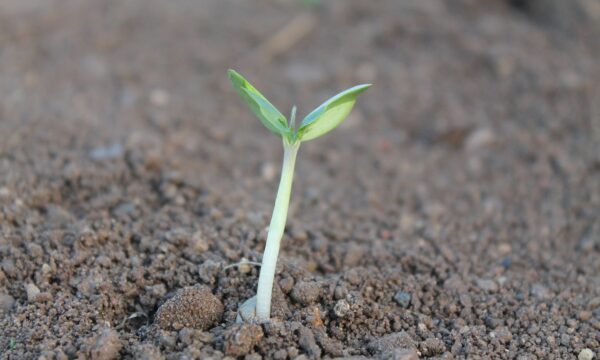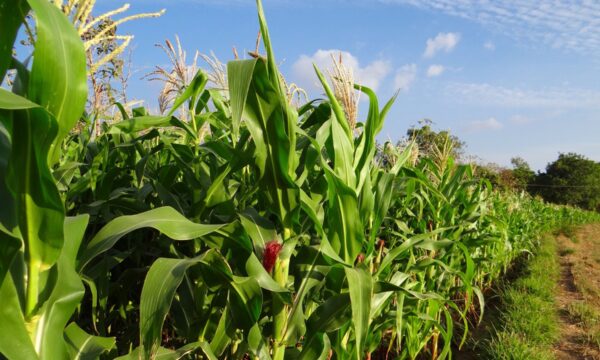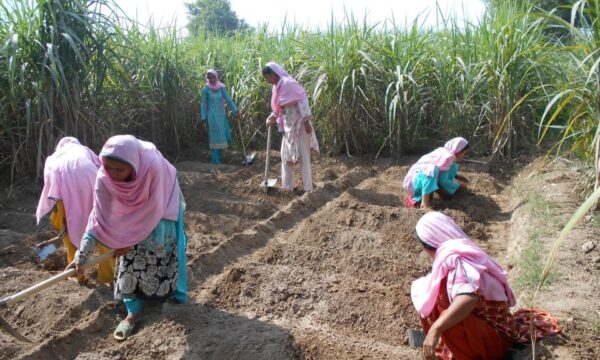Pests and diseases of rice are a significant constraint in rice production, accounting for up to 30% of yield losses. Rice is cultivated in over 100 countries and is a staple food source for over half the world’s population. Therefore, the sustainable management of rice pests and diseases is essential if we are to feed our growing population.
In this blog, we look at five pests and diseases threatening rice production. For more detailed information on these pests and diseases of rice, visit the PlantwisePlus Knowledge Bank.
Nilaparvata lugens (brown planthopper)

Brown planthoppers are probably the most serious insect pest of rice in Asia, causing severe damage and reduced crop yields. These small, flying insects suck sap from rice plants, causing them to wilt and eventually die. The feeding damage is commonly referred to as ‘hopper burn’. Hopperburn begins in patches and rapidly spreads as planthoppers move from plant to plant.
Using resistant rice varieties and removing weeds from filed bunds can help manage the problem.
Find out more: Nilaparvata lugens (brown planthopper) Factsheet for Farmers
Leptocorisa oratorius (slender rice bug)

Slender leaf bugs are notorious for damaging rice grains directly. Adult and nymph rice bugs have piercing-sucking mouth parts that they use to cut the grain hulls and feed on the developing kernels. Their feeding activity can result in partially filled or empty grains. As a result, slender rice bugs are responsible for significant yield losses.
Slender rice bugs can survive on weeds and grasses around paddy fields, which causes significant problems for control strategies. Cultural control options include the cultivation of bunds around paddy fields and the periodic burning of grass grown on the bunds and fallow fields.
Find out more: Leptocorisa oratorius (slender rice bug) Factsheet for Farmers
Rhizoctonia solani (rice sheath blight)

Rice sheath blight is a fungal disease that attacks rice plants, causing dark lesions on the sheaths and leaves. These lesions can expand rapidly, girdling the plant and leading to wilting and death. The fungus survives in the soil and floats on the standing water of the rice field. It spreads quickly in high humidity conditions and can devastate entire paddy fields.
Recommended preventative measures include clean cultivation to eliminate the disease-causing fungus and crop rotation.
Find out more: Rhizoctonia solani (rice sheath blight) Factsheet for Farmers
Scirpophaga incertulas (yellow stem borer)

Yellow Stem Borers are a severe pest of rice, particularly in Asia. In regions where it occurs, it is found in almost every rice field, in each rice season.
Yellow stem borers are the larvae of a moth species that bore into rice stems, disrupting nutrient flow and weakening the plant’s structure. Infested plants exhibit ‘dead hearts,’ where the central shoot dies, leading to stunted growth and reduced yields. This pest is particularly challenging to control due to its hidden feeding behaviour.
Scirpophaga incertulas has a large complex of natural enemies; however, these mainly occur at low levels. Conservation of these natural enemies is essential to maximize natural biological control.
Find out more: Scirpophaga incertulas (yellow stem borer) Factsheet for Farmers
Pomacea canaliculata (invasive apple snail)

Invasive apple snails are a significant threat to rice crops. These invasive aquatic snails feed on young rice seedlings. The first symptom of damage is a reduced plant stand where snails have severed the plant stalk below the water level. They have a voracious appetite – a large adult snail can consume a blade of rice in 3-5 min. The life cycle of the invasive apple snail and its ability to grow and reproduce quickly make it a particular menace for rice farmers.
Find out more: Pomacea canaliculata (invasive apple snail) Factsheet for Farmers
PlantwisePlus Knowledge Bank
Find information on pests and diseases of rice on the PlantwisePlus Knowledge Bank.
The PlantwisePlus Knowledge Bank is a free online resource that gathers plant health information from across the world. It contains over 15,000 pieces of content, which include pest management decision guides (PMDG), Factsheets for Farmers (FFF), species pages, photosheets, manuals and video factsheets in over 100 languages.
1 Comment
Leave a Reply
Related News & Blogs
How plant clinics are strengthening crop health services in Bangladesh
When the first-ever plant clinic in Bangladesh opened in Dhaka in 2013, it initially faced a lack of interest due to its novelty and limited awareness among farmers. However, it went on to expand, providing advice to over 17,000 farmers and led to the…
2 July 2025





The global perspective you bring to the discussion emphasizes the interconnectedness of agriculture and the need for collaborative, cross-border efforts. It’s heartening to see organizations like Plantwise playing a pivotal role in addressing these critical issues.
Looking forward to more insightful content from your team!